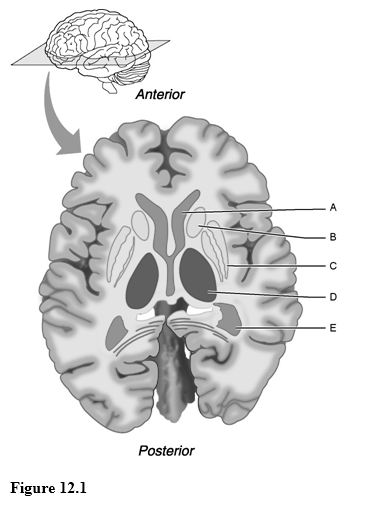A patient has trouble keeping food between his teeth during chewing. Which muscle may be paralyzed?
A. Risorius
B. Masseter
C. Mylohyoid
D. Buccinator
E. Zygomaticus major
Answer: D. Buccinator
You might also like to view...
Which of the following would not be classified as a lymphatic structure?
A) pancreas B) spleen C) tonsils D) Peyer's patches of the intestine
Using Figure 12.1, match the following:

1) Afferent impulses from all senses and all parts of the body converge here and synapse with at least one of its nuclei.
2) Putamen.
3) Anterior horn of lateral ventricle.
4) Inferior horn of lateral ventricle.
5) Part of the basal nuclei.
6) Thalamus.
Among other functions, hepatocytes (liver cells) are specialized for detoxifying drugs or other chemicals. Hepatocytes have large amounts of ________.
A. smooth endoplasmic reticulum B. microtubules C. centrioles D. cilia E. DNA
The production of leukocytes is called ________.
Fill in the blank(s) with the appropriate word(s).